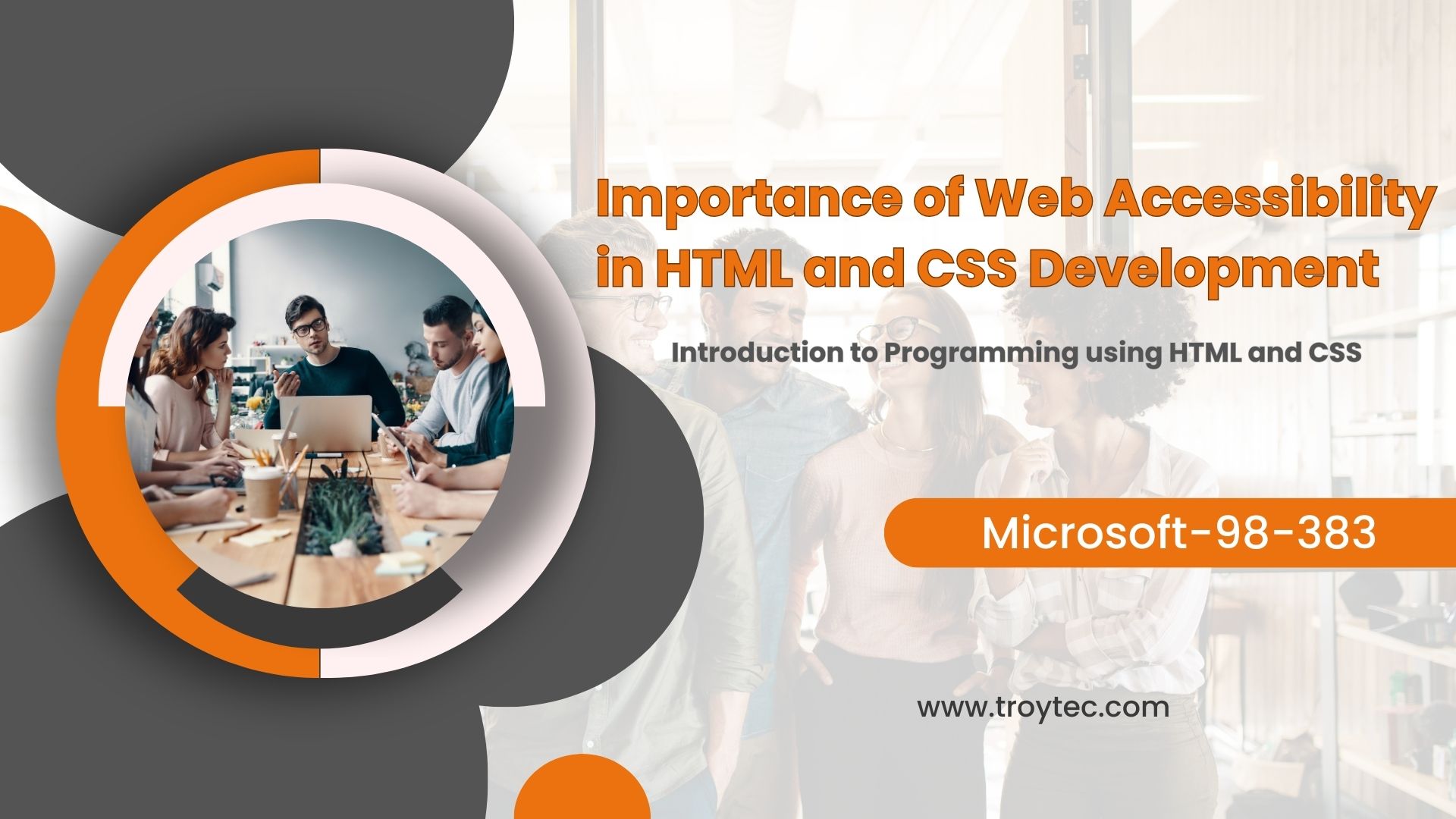The 98-383 Exam Importance of Web Accessibility in HTML and CSS Development
Introduction:
Web accessibility is a crucial aspect of modern web development, and it plays a significant role in the 98-383 Introduction to Programming Using HTML and CSS exam. In this article, we'll explore the importance of web accessibility in HTML and CSS development, why it matters, and how you can ensure that your web projects are accessible to everyone.
Understanding Web Accessibility:
- Defining Web Accessibility: Web accessibility refers to designing and developing websites and web applications to ensure People who have disabilities are able to perceive, navigate, and interact with things around them. Effectively. Disabilities can include visual, auditory, motor, and cognitive impairments.
- Legal and Ethical Obligations: Different laws and regulations, such as the Americans with Disabilities Act (ADA) and the Web Content Accessibility Guidelines (WCAG), mandate web accessibility. Non-compliance with regulations may lead to legal issues. And have a detrimental effect on the reputation of a website.
Why Web Accessibility Matters:
- Inclusivity: Web accessibility is able to access content, regardless of their abilities. And use the content on a website. Elevating inclusivity and equal access to information and services is its primary goal. Any errors in spelling, grammar, and punctuation have been corrected.
- Wider Audience Reach: An accessible website can reach a broader audience, including individuals with disabilities, aging populations, and those using assistive technologies like screen readers or voice commands.
- Enhanced SEO: Many accessibility practices align with search engine optimization (SEO) guidelines. Improving accessibility can positively impact your website's search engine rankings.
- Positive User Experience: Accessible websites often provide a better user experience for everyone. Straightforward navigation, well-structured content, and responsive design benefit all users.
How to Ensure Web Accessibility in HTML and CSS Development:
- Semantic HTML: Using semantic HTML elements correctly to communicate your content's meaning and structure is essential. Additionally, make sure to proofread your work to avoid any spelling, grammar, or punctuation errors. Headings, lists, and landmarks (like nav and main elements) should be used thoughtfully.
- Alt Text for Images: Always provide descriptive alternative text for images to ensure screen readers and other assistive technologies can understand them.
- Keyboard Navigation: Ensure that all interactive elements can be accessed and used using a keyboard alone. Focus on keyboard-friendly navigation and avoid relying solely on mouse-based interactions.
- Contrast and Color: Pay attention to text and background color contrast to make content readable for individuals with visual impairments. Avoid relying exclusively on color to convey information.
- Testing and Validation: Regularly test your web projects with accessibility tools and validators. Manual testing and user testing with individuals with disabilities can provide valuable insights.
Conclusion:
Web accessibility is not just a legal requirement; it's a moral and ethical obligation for web developers. In the 98-383 Introduction to Programming Using HTML and CSS exam, understanding and implementing web accessibility principles is essential. By creating accessible web experiences, you contribute to a more inclusive internet and open doors to a broader audience for your web projects.
.jpg)
.jpg)
.jpg)
.jpg)
Comments
Post a Comment